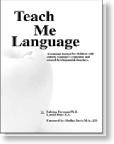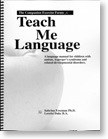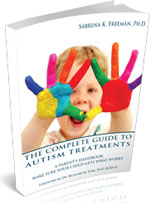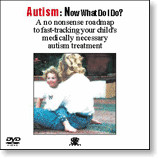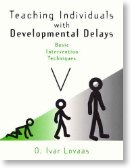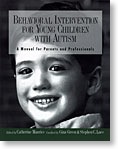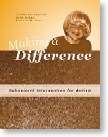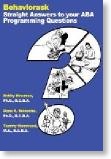segregation
Groundhog Day the Movie, Extended Autism Edition
15/03/12 15:32 Filed in: autism | Asperger's Syndrome
Every morning, I arrive at my computer hoping to read something new and hopefully uplifting about autism. More often than not, recurring themes play out day after day, year after year. Perhaps this is one of the side effects of being introduced to the world of autism over twenty years ago.
Unfortunately, the tragedies seem to never end. The most common and horrendous is where a parent takes their life and the life of their autistic child because they’d rather be dead than continue with the unbearable nature of this life. Last week was no exception. The latest autism related suicide/murder occurred in the San Francisco Bay Area.
At about the same time, a typical media feel-good story was publicized, this time about Savantism. Most often the type of talent showcased is music. In this case, it was about a singer with autism. We’re all supposed to suddenly feel good that this one person’s talents have finally been recognized. Although the singer should be applauded, it is troubling that it takes so long for those around him to recognize his skills and work with him on developing them further. He was three years old when he was diagnosed with autism. How could it have possibly taken 23 years to recognize his abilities?
The next popular news story typically concerns a high functioning person with autism (who actually may have Asperger’s Syndrome) being showcased as a representative for all people with autism. Last week, the representative with autism media chose to highlight is Dr. Temple Grandin. She is once again in the news, giving insight from her life to parents of children with autism. Whether a person who is as accomplished as Dr. Grandin can accurately represent all people with autism is never questioned, since that would be unseemly; however, it is always in the minds of parents whose children are severely afflicted with the disorder, insofar as their child is light years apart from a Dr. Grandin level of functioning.
Another theme that is endlessly rehashed with every newly minted media reporter is the “blame the parent” theory. There are several varieties of this meme. The theories morph from blame the mother, to blame the father, to finally blame the pair-bonding process wherein parents of children with autism apparently self-select each other and thereby create children with autism. Although these tired theories continue to bore us as they are introduced anew, they always remain offensive in nature, with each new crop of reporters that resurrect them.
A relatively recent autism theme that is introduced repeatedly, seemingly week after week, is autism segregation under the banner of compassion. The latest story is about special religious services for children who are too disruptive to attend regular services. We’re all supposed to feel warm and fuzzy about this segregation rather than incensed that 1) our community cannot be more tolerant of disability and accommodative, and 2) that no one is working with these kids to teach them the skills they need to be able to attend a regular service.
It would be great to wake up one fine morning and read about a genuine breakthrough in autism treatment, or even a scientifically backed cure! It would be wonderful to never hear of another autism murder/suicide or more pap from green horn reporters about “newly discovered” discredited therapies, but I don’t hold my breath. We parents of children with autism are seemingly forever in Groundhog Day the Movie, Extended Autism Edition.
Unfortunately, the tragedies seem to never end. The most common and horrendous is where a parent takes their life and the life of their autistic child because they’d rather be dead than continue with the unbearable nature of this life. Last week was no exception. The latest autism related suicide/murder occurred in the San Francisco Bay Area.
At about the same time, a typical media feel-good story was publicized, this time about Savantism. Most often the type of talent showcased is music. In this case, it was about a singer with autism. We’re all supposed to suddenly feel good that this one person’s talents have finally been recognized. Although the singer should be applauded, it is troubling that it takes so long for those around him to recognize his skills and work with him on developing them further. He was three years old when he was diagnosed with autism. How could it have possibly taken 23 years to recognize his abilities?
The next popular news story typically concerns a high functioning person with autism (who actually may have Asperger’s Syndrome) being showcased as a representative for all people with autism. Last week, the representative with autism media chose to highlight is Dr. Temple Grandin. She is once again in the news, giving insight from her life to parents of children with autism. Whether a person who is as accomplished as Dr. Grandin can accurately represent all people with autism is never questioned, since that would be unseemly; however, it is always in the minds of parents whose children are severely afflicted with the disorder, insofar as their child is light years apart from a Dr. Grandin level of functioning.
Another theme that is endlessly rehashed with every newly minted media reporter is the “blame the parent” theory. There are several varieties of this meme. The theories morph from blame the mother, to blame the father, to finally blame the pair-bonding process wherein parents of children with autism apparently self-select each other and thereby create children with autism. Although these tired theories continue to bore us as they are introduced anew, they always remain offensive in nature, with each new crop of reporters that resurrect them.
A relatively recent autism theme that is introduced repeatedly, seemingly week after week, is autism segregation under the banner of compassion. The latest story is about special religious services for children who are too disruptive to attend regular services. We’re all supposed to feel warm and fuzzy about this segregation rather than incensed that 1) our community cannot be more tolerant of disability and accommodative, and 2) that no one is working with these kids to teach them the skills they need to be able to attend a regular service.
It would be great to wake up one fine morning and read about a genuine breakthrough in autism treatment, or even a scientifically backed cure! It would be wonderful to never hear of another autism murder/suicide or more pap from green horn reporters about “newly discovered” discredited therapies, but I don’t hold my breath. We parents of children with autism are seemingly forever in Groundhog Day the Movie, Extended Autism Edition.
When accommodation becomes a synonym for segregation
17/11/11 15:24 Filed in: autism | Asperger's Syndrome

There is a growing trend that attempts to change society to better accommodate the perceived proclivities of people with autism. Although I understand the good intentions behind the idea, by accommodating people with autism to absurd extremes, are we not shrinking their world so it becomes even smaller than it already is? Do we really want the ghettoization or segregation of people with autism from the rest of society? The unintended consequence of voluntary segregation is that it may eventually become involuntary. One only has to look at history to see past segregationist movements which argue “separate but equal.” I think I speak for a sensible majority that does not wish to see segregation for people with autism, or for anyone else with a disability.
So the question is, how do people with autism, some of whom may be disruptive, watch a movie or go on a merry-go-round? The answer is: systematic desensitization.
Using science, it’s a much better idea to help people afflicted with autism who may have negative reactions to loud noises or bright lights, or any aversion to something commonly found in society. Under the guidance of Behavioral Consultants who understand how to work with this group of people, we need to build up their tolerance and thereby, give them the ability to go anywhere, and see any movie that they may enjoy. For those who think that there is no harm in leaving people with autism to their idiosyncratic aversions, let me give you a few actual examples that may make you rethink the “re-engineer their environment” program and reject it.
Imagine a child who dislikes the music of a mega-star like Beyonce or Justin Bieber. At first glance, that doesn’t seem to be a big problem; however, we all know what eventually happens to those songs -- they end up as Muzak, and can be heard virtually everywhere e. g., in elevators, restaurants, stores, office buildings. Or imagine a child who has an aversion to Mickey Mouse, or any of the Disney Characters. These symbols pop up everywhere in society, and it is unpredictable where you will encounter them next. Who really wants to take someone with autism out into the community when, at any moment, the person may become distraught at the music in a random elevator or the image on a stranger’s t-shirt? When the child is small, this is somewhat problematic. When the person becomes an adult, the situation can become very serious. If people with autism are not helped to cope with sounds, sights, and images to which they have an aversion, their world shrinks, becoming smaller and smaller by the year, until eventually they may prefer to never leave their home or, in some cases, their room!
Instead of re-engineering the world to fit people with autism, let’s commit to giving people with autism the tools they require to cope with the real world around them, and thereby give them opportunities to participate in all the wonderful experiences that society has to offer.


